 |
|
|
plants
text index | photo
index
|
| Figs in general |
| India-rubber
tree Ficus elastica Family Moraceae updated Mar 10 Where seen? This large tree can be seen on Pulau Ubin. According to Hsuan Keng, it is native in the northern Malay peninsula and was often planted as an ornamental in Singapore. According to Corners, the abundance of this tree in inhabited parts of Malaya is due to the veneration that the Indians hold for it. Features: A large strangling fig with many aerial roots. Leaves glossy dark green, leathery, large (7.5-25cm) with many fine parellel veins. The large stipules are bright red. The small figs are oval (1cm long) and ripen yellow. Large red buds also appear on the lower branches. Human uses: According to Corners, before the introduction of Hevea brasiliensis, the India-rubber tree was a major source of rubber in our part of the world. According to Burkill, it lost out because the India-rubber tree latex contains a resin that hardens with time thus making the latex less elastic. It also does not produce as much latex as H. brasiliensis. The Indians apparently had been using latex from the tree to line their containers, e.g., to contain honey or to bail out water. When the Europeans discovered the latex, thousands of India-rubber trees were planted in Malaysia in an effort to produce the latex in commercial quantities. |
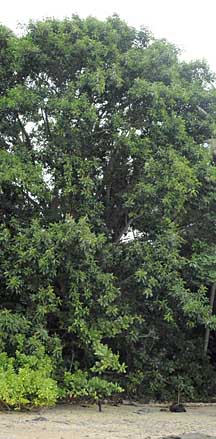 Pulau Ubin, Dec 09 |
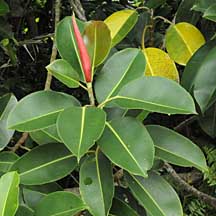 Pulau Ubin, Dec 09 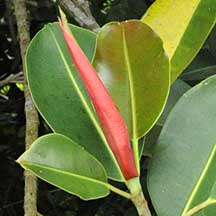 |
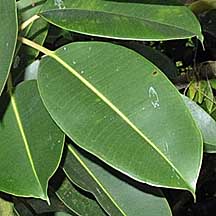 Pulau Ubin, Dec 09 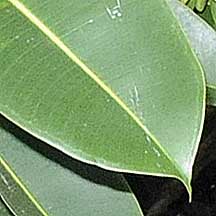 |
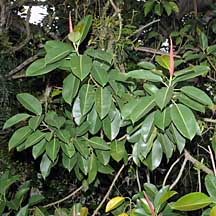 Pulau Ubin, Dec 09 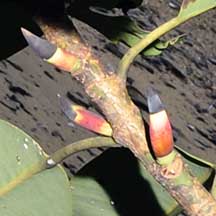 |
|
References
|